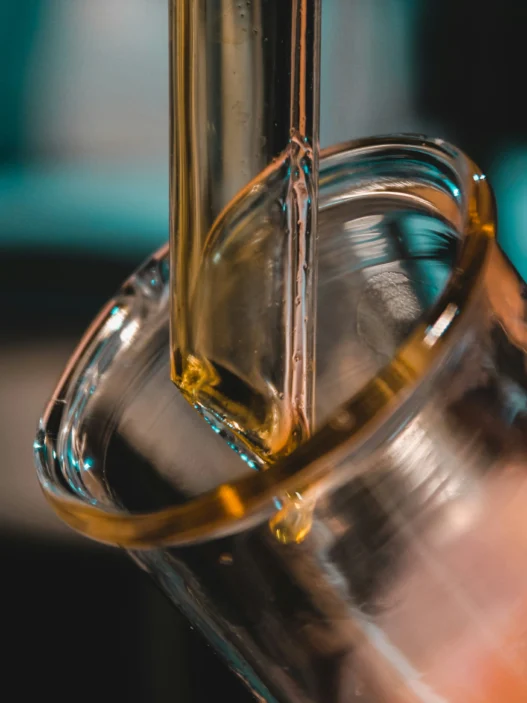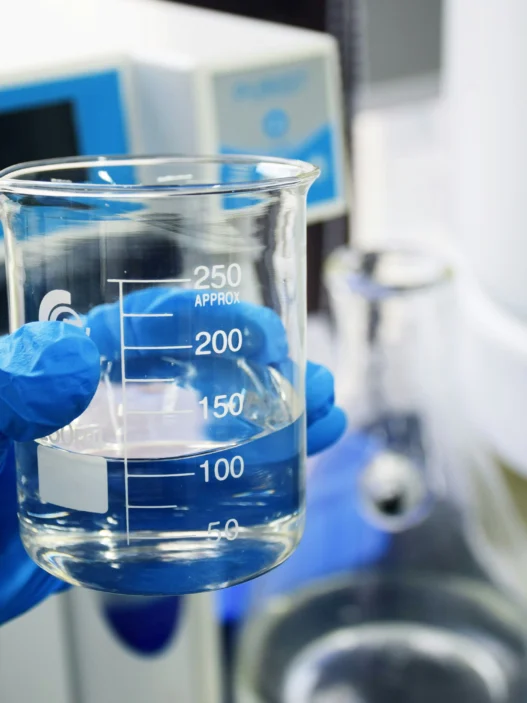Methylcyclohexane, a type of cycloalkane composed of a ring of carbon atoms with an attached methyl group, is relevant to everyday life due to its use as a solvent in various industrial processes, such as in the manufacturing of paints, coatings, and adhesives. Additionally, it is used as a component in fuel additives and as a precursor in the production of other chemicals. Despite its industrial applications, methylcyclohexane also plays a role in daily life as an ingredient in certain consumer products, such as cleaning agents and degreasers.
Table of Contents:
- 💡 Commercial Applications
- ⚗️ Chemical & Physical Properties
- 🏭 Production & Procurement
- ⚠️ Safety Considerations
- 🔬 Potential Research Directions
- 🧪 Related Compounds
💡 Commercial Applications
Methylcyclohexane, a colorless liquid with a faint odor, finds commercial and industrial applications as a solvent in various industries. It is used in the production of rubber, resins, and paints due to its ability to dissolve a wide range of materials. Additionally, methylcyclohexane is utilized as a cleaning agent for metal surfaces and in the extraction of essential oils.
In terms of drug and medication applications, methylcyclohexane is not commonly used in pharmaceuticals. However, it is sometimes employed in the synthesis of certain organic compounds that have potential medicinal properties. Researchers continue to explore the potential uses of methylcyclohexane in drug development, but its current applications in the pharmaceutical industry remain limited.
⚗️ Chemical & Physical Properties
Methylcyclohexane is a colorless liquid with a mild, sweet odor, reminiscent of cyclohexane. It is a stable compound that is not easily decomposed.
With a molar mass of 98.19 g/mol and a density of about 0.77 g/cm³ at 20 °C, methylcyclohexane is lighter than common food items such as water (molar mass: 18.02 g/mol, density: 1 g/cm³) and vegetable oil (molar mass: ~500 g/mol, density: ~0.9 g/cm³).
Methylcyclohexane has a melting point of -126 °C and a boiling point of 101.5 °C. Compared to common food items such as butter (melting point: 32-35 °C, boiling point: ~150 °C) and sugar (melting point: 185 °C, boiling point: 186 °C), it exhibits lower melting and boiling points.
Methylcyclohexane is practically insoluble in water but is soluble in non-polar solvents like ethanol and ether. It has a low viscosity, similar to water. In contrast, common food items like salt (soluble in water) and honey (higher viscosity) behave differently in terms of solubility and viscosity compared to methylcyclohexane.
🏭 Production & Procurement
Methylcyclohexane, a key chemical compound used in various industrial processes, is primarily produced through the hydrogenation of toluene. This process involves the reaction of toluene with hydrogen gas in the presence of a catalyst, typically a metal such as nickel or platinum. The hydrogenation of toluene results in the formation of Methylcyclohexane along with other by-products.
Once produced, Methylcyclohexane can be procured from chemical manufacturers or suppliers who specialize in the production and distribution of industrial chemicals. It is typically transported in bulk via tanker trucks or railcars to various industries that require Methylcyclohexane for their manufacturing processes. Additionally, Methylcyclohexane can also be purchased in smaller quantities from chemical distributors for laboratory or research purposes.
When transporting Methylcyclohexane, it is important to adhere to strict safety protocols due to its flammable nature. Containers used for transportation must be properly labeled and secured to prevent any spills or leaks. Furthermore, personnel involved in the handling and transportation of Methylcyclohexane must undergo proper training to ensure safe practices are followed at all times.
⚠️ Safety Considerations
Safety considerations for Methylcyclohexane include its flammability and potential for causing skin and eye irritation. It is important to handle Methylcyclohexane in a well-ventilated area and avoid contact with skin and eyes. In case of any exposure, immediate medical attention should be sought. Proper personal protective equipment, such as gloves and goggles, should be worn when handling Methylcyclohexane to prevent any accidents or injuries.
The hazard statements for Methylcyclohexane include its flammable properties and potential for causing skin and eye irritation. It is also harmful if swallowed or inhaled. Methylcyclohexane should be kept away from heat, sparks, and open flames to prevent any fire hazards. It should be stored in a cool, dry place away from incompatible materials to avoid any chemical reactions.
Precautionary statements for Methylcyclohexane include avoiding prolonged or repeated exposure to the substance. It should be stored in a well-ventilated area and kept in a tightly closed container. In case of contact with skin or eyes, it should be rinsed thoroughly with water. If ingested or inhaled, immediate medical attention should be sought. Proper disposal methods should be followed to prevent any environmental contamination.
🔬 Potential Research Directions
One potential research direction for Methylcyclohexane is to investigate its use as a solvent in various chemical processes. This could involve studying its effectiveness in dissolving different types of compounds and its potential applications in chemical reactions.
Another area of research could focus on the environmental impact of Methylcyclohexane. This may involve studying its toxicity to organisms and its potential for bioaccumulation in the environment. Understanding these factors could help in determining the risks associated with its use and disposal.
Furthermore, research could be conducted on the potential industrial applications of Methylcyclohexane. This could involve exploring its use as a raw material for the production of other chemicals or as a component in fuel formulations. Investigating these applications could lead to new opportunities for utilizing Methylcyclohexane in various industries.
🧪 Related Compounds
One similar compound to Methylcyclohexane based upon molecular structure is Ethylcyclohexane. This compound is structurally similar to Methylcyclohexane, with the only difference being the substitution of a hydrogen atom with an ethyl group. Ethylcyclohexane is a colorless liquid with a mild odor, commonly used as a solvent in various industrial processes.
Another compound similar to Methylcyclohexane is Isopropylcyclohexane. This compound has the same molecular formula as Methylcyclohexane, but with the addition of an isopropyl group in place of a hydrogen atom. Isopropylcyclohexane is a colorless liquid with a slightly sweet odor, used as a solvent in the production of various chemicals and pharmaceuticals.
A third compound similar to Methylcyclohexane is Tert-butylcyclohexane. This compound has the same molecular formula as Methylcyclohexane, but with the substitution of a hydrogen atom with a tert-butyl group. Tert-butylcyclohexane is a colorless liquid with a faint odor, commonly used as a solvent in the manufacturing of polymers and plastics.





